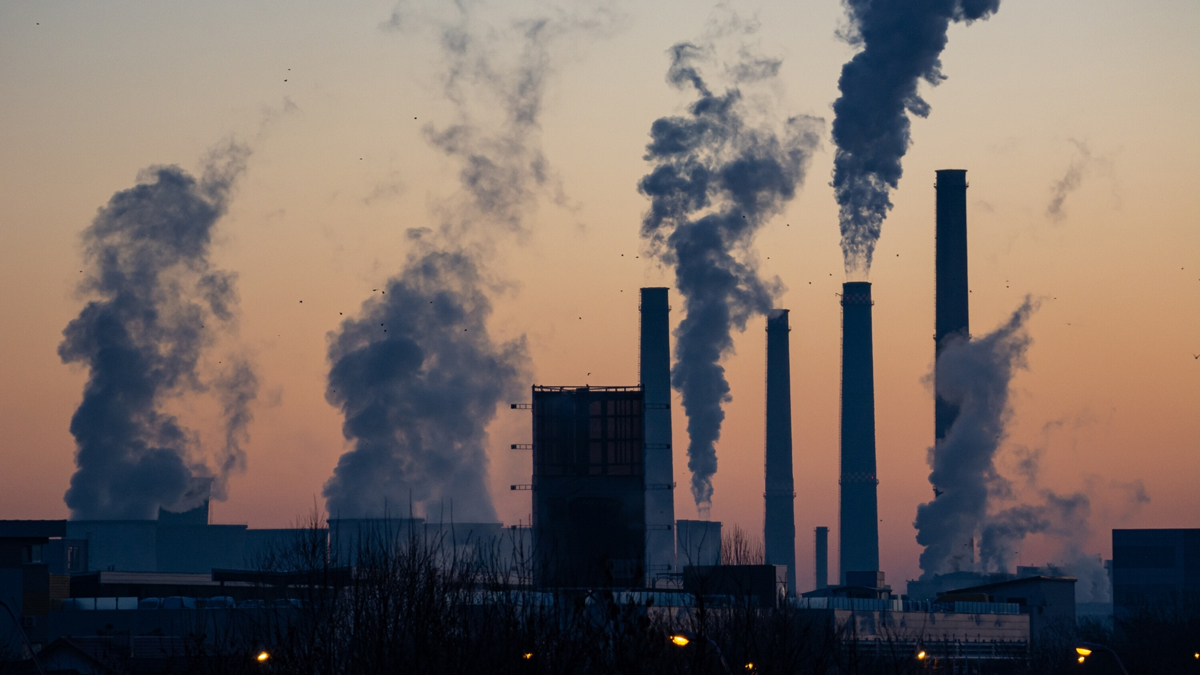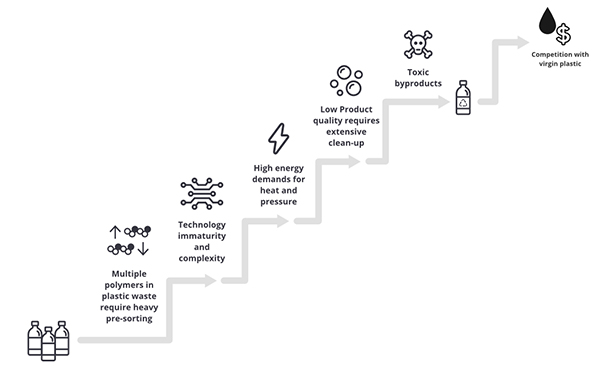Photo by Ella Ivanescu on Unsplash
As people around the world call for an end to plastic pollution, the plastic and petrochemical industry has seized upon a silver bullet solution: chemical recycling, or “advanced recycling.” This older, failed technology has been dusted off and breathlessly promoted in industry circles as the answer to plastic pollution, but the proof to back up these claims has been noticeably absent. What really is chemical recycling, and is it all that it’s cracked up to be? In short, the answer is no. A technical assessment and short briefing released today find that chemical recycling is polluting, bad for the climate, and has a track record of technical failures. Far from a promising solution to plastic waste, chemical recycling is a distraction, at best. Chemical recycling refers to a process that aims to turn plastic waste back into virgin quality (like new) plastic through some combination of heat, pressure, depleted oxygen, catalysts, and/or solvents. This differs from mechanical recycling, which essentially melts plastic waste and then turns it into pellets or flakes for further use. Sounds good so far, right?
Chemical recycling is polluting, bad for the climate, and has a track record of technical failures. Far from a promising solution to plastic waste, chemical recycling is a distraction, at best.

This diagram shows the inputs and outputs of the plastic life cycle when it is chemically recycled. Greenhouse gases are emitted in multiple stages, and much of the material ends up getting lost or burned.
Unfortunately, all too often what’s called “chemical recycling” is, on closer examination, a fancy way of burning plastic. Not so good. Industry will often use the term “chemical recycling” or “advanced recycling” to actually mean plastic-to-fuel, where plastic waste (made of fossil fuels) is turned back into a fuel that is then burned, releasing greenhouse gases that bring us one step closer to climate breakdown. On top of that, these plants quite literally have to add fuel to the fire: it takes even more fuel to power the process, and the process itself leads to more greenhouse gas emissions. In short, more plastic waste is turned into greenhouse gas emissions than back into plastic. At every step of the way, chemical recycling is a climate polluter. Not only that, but chemical recycling is also an environmental health risk. Plastic waste contains a whole host of toxins (studies show that single-use food packaging can contain over 100,000 chemicals) and heating plastic releases a whole other toxic stew, like carbon monoxide, CO2, and dioxins. All of those toxic substances must go somewhere—into the air, the water, and the final products. Since much of “chemical recycling” is actually creating dirty fuels instead of new plastic, burning these fuels is not only a climate problem, it’s a health problem too. The COVID-19 crisis has made it impossible to ignore how air pollution kills.
More plastic waste is turned into greenhouse gas emissions than back into plastic.
The petrochemical industry has long depicted the viability of chemical recycling in rosily optimistic terms. However, current data suggest that this industry outlook is a far cry from the technology’s actual capabilities. In fact, there’s a disturbing lack of independent reporting or research on the subject of chemical recycling– most of what does exist is funded by the very industry that has a vested interest in the technology succeeding, and is based on lab studies, not real-world conditions. In fact, these technologies have an abysmal track record of technical and economic failures. As of 2017, the core technologies — known as pyrolysis and gasification — had wasted at least $2 billion of investments on canceled or failed projects. After all that, even if these projects do manage to produce some plastic, there is no market for it — with virgin plastic prices at rock bottom, expensive, energy-intensive technologies like chemical recycling just can’t compete.
As this diagram shows, every step of the chemical recycling process brings insurmountable technological and economic challenges.
Chemical recycling has been billed as a tech-fix that will solve our plastic problems. It won’t. It turns out that even when a chemical recycling facility actually tries to turn plastic back into plastic, much of it gets burned or lost in the process anyway. Meanwhile, the same industry that is promoting chemical recycling is planning on quadrupling the amount of plastic on the planet by 2050. There’s no way chemical recycling, or any other waste management approach, will be able to stop us from drowning in plastic. Our society urgently needs to transition from a fossil fuel economy to a sustainable future, and we have no more time to waste on chemical recycling. We have a hard road ahead of us. A global pandemic is plunging us into a global depression. Plastic pollution is surging as industry falsely pushes single-use plastic as the safest option for the public, and recycling markets are once again tanking. As we recover, we must invest wisely in proven, common-sense, upstream solutions that will support public health and a safe environment, and not waste precious funds on risky industry pipe dreams. GAIA members around the world have been pioneering zero waste systems that stop plastic at the source, create good jobs, and build local economies and climate resilience. Let’s stick with what works.
Read #breakfreefromplastic’s full statement on chemical recycling.




